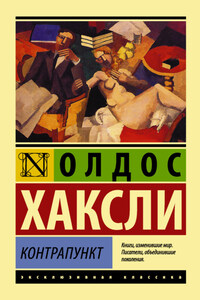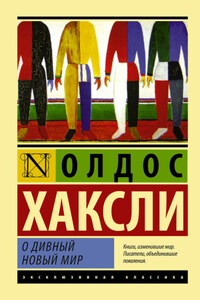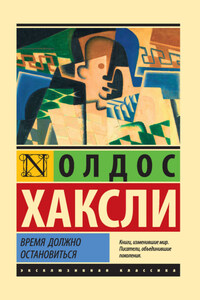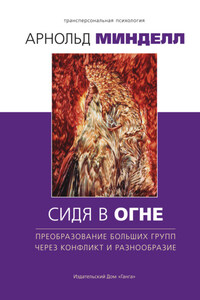A grey building of only thirty-four stories. Over the main entrance the words, CENTRAL LONDON HATCHERY AND CONDITIONING CENTRE, and, in a shield, the World State’s motto, COMMUNITY, IDENTITY, STABILITY.
The enormous room on the ground floor faced towards the north. A harsh thin light glared through the windows. The overalls of the workers were white, their hands gloved with a pale corpse-coloured rubber. The light was frozen, dead, a ghost. The only colourful things were the yellow barrels of the microscopes; streak after luscious streak in long recession down the work tables.
“And this,” said the Director opening the door, “is the Fertilizing Room.”
Bent over their instruments, three hundred Fertilizers were plunged, as the Director of Hatcheries and Conditioning entered the room, in the scarcely breathing silence. A few newly arrived students, very young and callow, followed nervously at the Director’s heels. Each of them carried a notebook. The D. H. C. for Central London always made a point of personally conducting his new students round the various departments.
“Just to give you a general idea,” he would explain to them. For of course some sort of general idea they must have, if they were to do their work intelligently, if they were to be good and happy members of society.
“Tomorrow,” he would add, smiling at them in a slightly menacing way, “you’ll be settling down to serious work. You won’t have time for generalities. Meanwhile…”
Meanwhile, it was a privilege. The boys scribbled like mad.
The Director advanced into the room. Tall and rather thin, he had a long chin and big rather prominent teeth. Old, young? Thirty? Fifty? Fifty-five? It was hard to say. And in this year of stability, A.F.632, it didn’t occur to you to ask this question anyway.
“I shall begin at the beginning,” said the D.H.C. “These are the incubators.” And opening an insulated door he showed them racks upon racks of numbered test-tubes. “The week’s supply of ova. Kept at blood heat[1]. The male gametes,” and here he opened another door, “they have to be kept at thirty-five instead of thirty-seven. Full blood heat sterilizes.”
He gave them a brief description of the modern fertilizing process; spoke first, of course, of its surgical introduction; continued with the technique for preserving the ovary alive and actively developing; referred to the liquor in which the eggs were kept; and, leading the students to the work tables, actually showed them how this liquor was drawn off from the test-tubes and was let out drop by drop onto the specially warmed slides of the microscopes; how the eggs which it contained were inspected for abnormalities, counted and transferred to a porous receptacle; how this receptacle was immersed in a warm solution containing free-swimming spermatozoa; and how, after ten minutes, the container was lifted out of the liquor; where the Alphas and Betas remained until definitely bottled; while the Gammas, Deltas and Epsilons were brought out again, after only thirty-six hours, to undergo Bokanovsky’s Process[2].
“Bokanovsky’s Process,” repeated the Director, and the students underlined the words in their little notebooks.
One egg, one embryo, one adult. But a bokanovskified egg [3]will bud, will proliferate, will divide. From eight to ninety-six buds, and every bud will grow into an embryo, and every embryo into a full-sized adult. Making ninety-six human beings grow where only one grew before. Progress.
“Essentially,” the D.H.C. concluded, “the process consists of a series of arrests of development[4].”
He pointed. On a very slowly moving band a rack-full of test-tubes was entering a large metal box, and another rack-full was emerging. It took eight minutes for the tubes to go through, he told them. Eight minutes of hard X-rays. A few eggs died. The rest were returned to the incubators, where they began to develop. In the end, one egg was on its way to becoming anything from eight to ninety-six embryos—an improvement on nature. Identical twins—but not in twos and threes as in the old days, when an egg would sometimes accidentally divide, but in dozens at a time.
One of the students was fool enough to ask where the advantage was.
“My good boy! Can’t you see? Can’t you see?” He raised a hand; his expression was solemn. “Bokanovsky’s Process is one of the major instruments of social stability!”
Standard men and women; in uniform batches. The whole of a small factory staffed with the products of a single bokanovskified egg.
“Ninety-six identical twins working ninety-six identical machines!” The director’s voice was very enthusiastic. “You really know where you are. For the first time in history. ‘Community, Identity, Stability.’ If we could bokanovskify [5]indefinitely the whole problem would be solved.”
Solved by standard Gammas, unvarying Deltas, uniform Epsilons. Millions of identical twins.
“But, alas,” the Director shook his head, “we
















